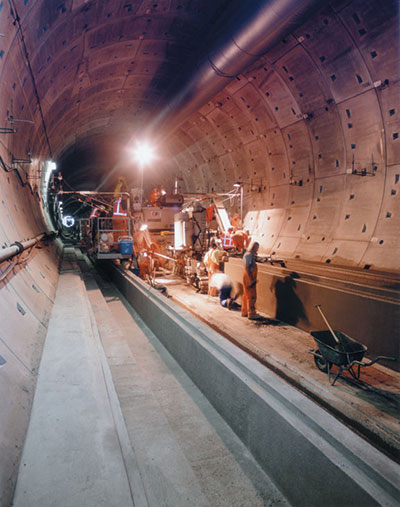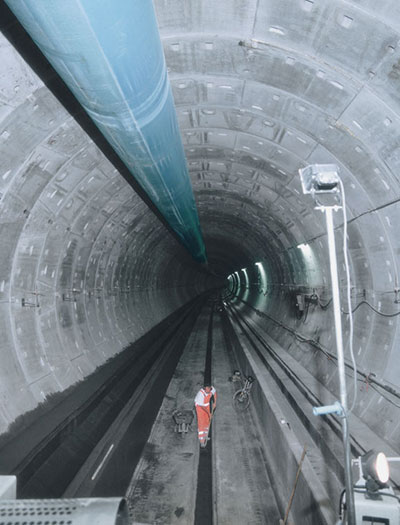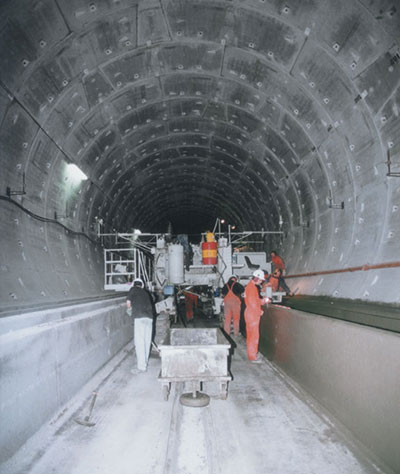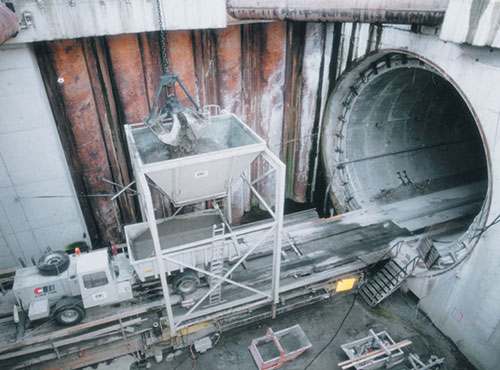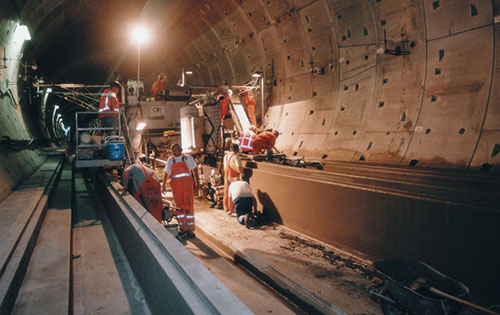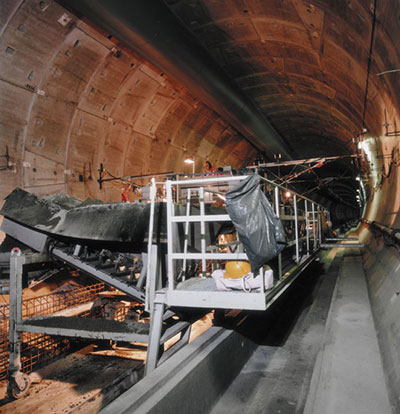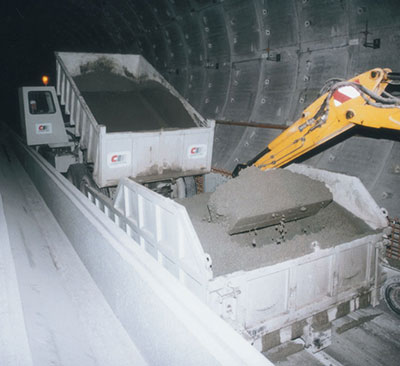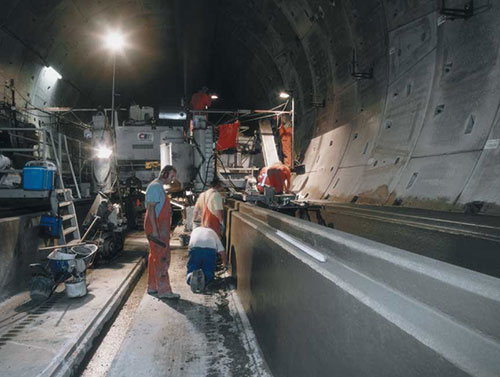GOMACO World Index --- GOMACO World 30.2 - April 2002
What Lies Beneath
Standing near Rotterdam, Netherlands, admiring the surrounding scenery, you would never know what is happening underneath the surface. Cobeton B.V., a concrete contractor based out of Utrecht, is taking part in the process of building two tunnels.
It's not the first tunnel project in which Cobeton has been involved, so the company knew the challenges they would have to face. Challenges the ordinary concrete contractor doesn't have to think about.
For example... lighting. Tunnels are absent of light and extra lighting had to be mounted to their four-track Commander III and along the side walls of the tunnel.
Proper ventilation. A fresh source of oxygen is essential in the underground tunnel and methods of supplying it had to be devised. Dangerous carbon monoxide has no place to vent, so the Commander III was also modified for zero emissions.
Tunnels are circular. GOMACO pavers are equipped to run on flat surfaces. For the first phase of the project, the Commander III's tracks were angled at 30 degrees to follow the contour of the rounded tunnel walls.
Other challenges included supplying concrete to the paver working in a tunnel, modifying the Commander III's conveyor to be able to get concrete into the hopper, slipforming three unique profiles over steel reinforcing, finding the proper concrete mix design to accomplish the unique profiles, and finding room to run the stringline in the tight confines of the tunnel.
It's quite an interesting project. The formal name of it is the Botlekspoor Tunnel. It's part of a two tunnel project that will allow freight trains to travel from Rotterdam to Germany.
The railway has to be built underground because of space limitations.
"There was simply not enough space above ground to build this track," Huub Vissers, a special works and project management engineer for Cobeton, said. "There was also a river that would have to be crossed and it was decided it would be better to build below ground."
The tunnels have a diameter of 28 feet (8.6 m) and each is 5906 feet (1800 m) long. Cobeton brought their Commander III in to slipform the tunnel floor and sidewalls with a unique design to allow cable to be laid in them when the project is completed.
Specially designed arms to hold stringline were mounted to the tunnel walls 13 feet (4 m) above the floor. At that height, the stringline would be out of the workers' way. The stringline sensors were mounted to extended arms attached to the paver.
The floor of the tunnel was the first to be slipformed. The width of the floor is 10 feet (3.1 m) and the thickness of the slab varies. The mold was designed with a trough in the center to allow for water drainage. The tracks had to be angled at 30 degrees to follow the curved contour of the tunnel.
After the floor was complete, the tracks were brought back to their normal position and the Commander III could run on the new floor. Carefully placed steel reinforcing for the side cable walls was the next phase of the project.
Each of the side walls had its own unique profile. The drawings included with this article show the dimensions and best explain the difficulty of the profiles.
Concrete for the project was supplied by one of Cobeton's own mobile batch plants. The concrete was transported from the batch plant to the job site where it was loaded into a crane with a clam shell bucket. The crane dumps into a hopper on the surface near the opening of the tunnel.
Specially designed shuttles transport the concrete along the tunnel bed to the paver. Another crane and bucket transfers the concrete from the shuttles onto the modified conveyor of the Commander III.
A specially designed zero-slump concrete mix consisting of sand, crushed granite, Portland fly ash, cement and super plasticizer was used for all three applications.
"Six months before we started this project we had already begun preparations for the logistics, modifications and delivery of the concrete," Vissers explained. "We decided right away to use our Commander III. Prefab was not possible because of the variation of the tunnel and the Commander III was a faster, better alternative that could follow the variations."
Production rates were calculated during the preparation period and the Commander III has had no problems meeting them. Cobeton averages 820 feet (250 m) of production during a 12-hour shift.
Work is continuing on the Rotterdam tunnels. Cobeton's next phase will include the elimination of stringline. They plan on equipping their Commander III with the stringless 3-D control system developed by GOMACO and Laser Alignment.
It will add another interesting aspect to this unique project.
"The project is going well and we're reaching the requirements with the help of the Commander III and the skilled personnel we have on the project," Vissers concluded. "It all requires good preparation and thinking. Good ventilation is important, too."
Subscribe to Receive GOMACO World Magazine
